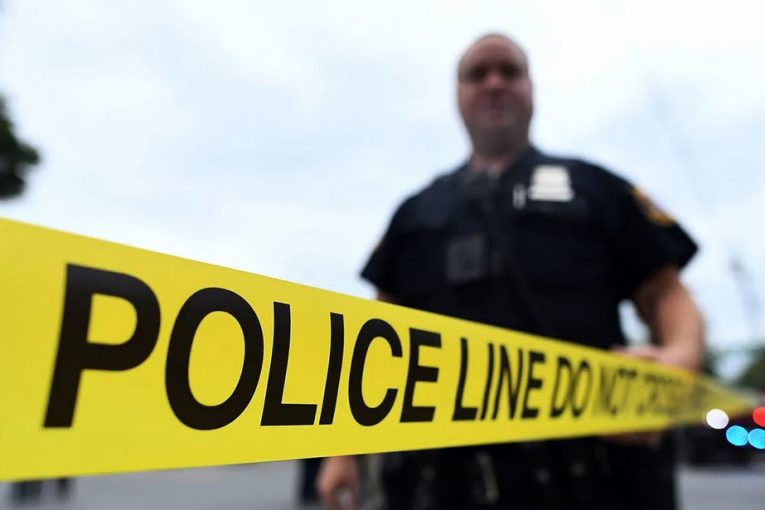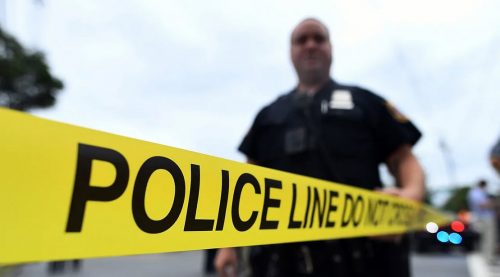

By Crescenzo Vellucci
The Vanguard Sacramento Bureau Chief
WASHINGTON, DC – Two of three “strikes” by two U.S. Park Police (USPP) officers on a news “cinematographer” and reporter at a George Floyd protest in June 2020 at Lafayette Park near the White House and the park violated USPP policy, according to an investigation released this week by the Inspector General of the Dept. of the Interior.

The news crew later filed a claim with the DOI, charging the use of force injured them and damaged their equipment.
But, said the IG, the USPP Internal Affairs Unit investigated the officers’ uses of force and referred its interim report to the U.S. Attorney’s Office (USAO) for the District of Columbia, which declined to prosecute the two officers. That’s when the IG stepped in.
The IG said it is forwarding its report finding the officers erred in attacking the news crew to the National Park Service Director “for any action deemed appropriate.”
The IG said in its report USSP “Officer 1 and Officer 2, used excessive force against two members of the news media during the operation to disperse protesters in and around Lafayette Park…Officer 1 struck the
Cinematographer with his USPP-issued shield and then pushed the Cinematographer’s camera, and Officer 2 struck the Reporter with his USPP-issued baton.”

Two of the officers’ action violated USSP policy, said the IG, which concluded “Officer 1’s first use of force (shield strike) against the Cinematographer complied with USPP policy, but we could not make the same finding with respect to Officer 1’s second use of force (camera push) because it did not appear that Officer 1 employed the “minimum level of reasonable force necessary to control [the] situation.”
The IG report added, “Officer 2’s baton strike against the Reporter did not comply with USPP policy because the policy does not permit an officer to use his baton to strike a retreating individual who is following officers’ orders to leave the area, an individual who no longer poses a threat to the officer or others,” which the officers admitted was true.

The IG explained in some detail that Officer 1’s first strike with a shield against the Cinematographer was “permitted under USPP policy because it was objectively reasonable and did not exceed the minimal level of
reasonable force necessary to control the situation based on the facts and circumstances confronting him at the time.”
“However,” the IG added, “we drew a different conclusion with respect to Officer 1’s later actions when he pushed the Cinematographer’s camera because the force that Officer 1 used did not appear to be the minimum level of reasonable force necessary to get the Cinematographer to leave the area.”

The IG report said, “Officer 2’s use of force against the Reporter did not comply with USPP policy” because USPP policy “does not permit an officer to use his baton to strike an individual who is running away in accordance with law enforcement officers’ commands to leave the area,” which the officers said was the case.
The IG argued the officer overreacted, and that an “objectively reasonable officer on the scene would not have concluded that the Reporter posed a threat under the circumstances, and none of the other circumstances authorizing the use of a baton strike under the USPP’s defensive equipment policy were present at the time Officer 2 struck the Reporter.”
According to the report, the news crew was positioned, they thought, “out of the way” of officers and believe they did not, as media, have to leave the area. No one told them, they said, to leave, and that the police “moved right past” them the prior evening.” The news crew also stated they “did not hear the
USPP ‘s warnings to leave the park.”

“After striking the individual with his shield (in the stomach, causing the newsperson to fall to the ground), Officer 1 told us that he noticed the individual was holding a video camera on his shoulder (and) no longer felt threatened,” but it was later proven the officer hits the newsperson because “he was distracting me from other people,” admitting during the investigation the newsperson was “not a viable threat.”
The IG said Officer 1 claimed he didn’t strike the Cinematographer, just telling him, “Get out of here,” but the IG report cited “video evidence…showed that Officer 1 reached out and grabbed the Cinematographer’s camera, pushing it off the Cinematographer’s shoulder.”

The IG suggested Officer 2’s actions were unnecessary, noting that Officer 2 went out of his way and “reached around” another officer to “hit the Reporter with his baton as the Cinematographer and the Repo1ier began running…away from the officers as instructed.
“The Reporter told us Officer 2’s baton strike landed on top of his shoulders and hit the strap of his backpack. He said the backpack took the impact of the strike and that a camera lens inside the backpack was damaged.
“The Reporter told us he had no bruising from the baton strike, only some tenderness and soreness around his neck and shoulders. The Reporter also said he received physical therapy for his injuries due to ongoing ‘pain and discomfort’ since the incident,” the IG report explained.
The IG concluded, “Officer 2’s statements appeared to be post-hoc justifications for the baton strike rather than credible recollections of what he perceived at the time. Moreover, none of the circumstances authorizing the use of a baton under the USPP’s defensive equipment policy were present at the time Officer 2 struck the Reporter. We therefore concluded that Officer 2’s baton strike did not comply with USPP policy.”